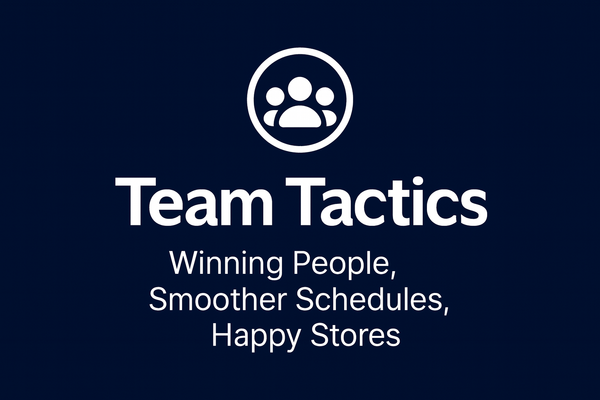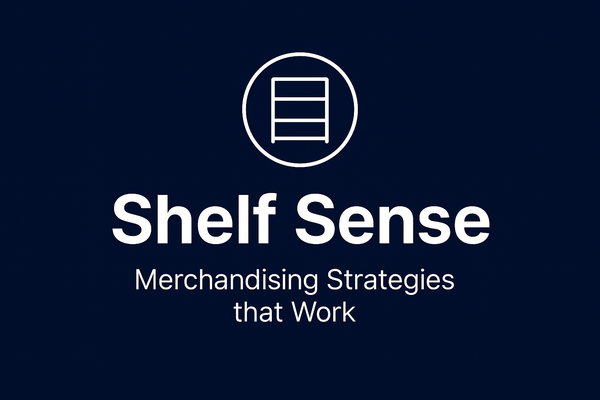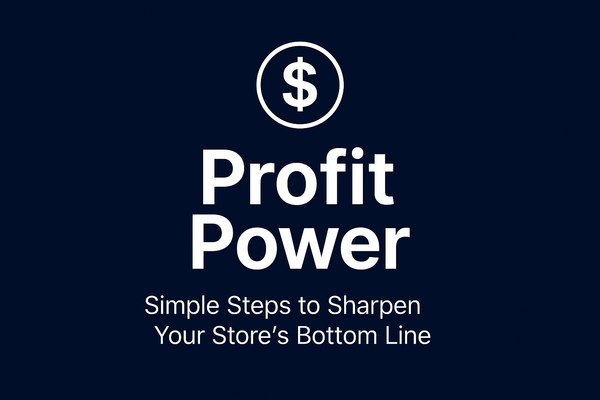Building Strong Vendor Partnerships That Actually Work: A 6-Phase System for Convenience Store Owners
Vendor chaos isn’t normal—it’s a management gap. Learn the 6-phase MikedOut Method to turn unreliable suppliers into strong, accountable partners that boost profit, cut stress, and stabilize your store operations.

If you’ve been in the convenience store business long enough, you’ve seen it—vendors who overpromise, underdeliver, and vanish when problems show up. You’re left with empty shelves, inconsistent pricing, and frustrated employees who can’t explain why the energy drink promo fell apart again. Many owners just shrug and say, “That’s how it goes with vendors.”
But here’s the truth: vendor chaos isn’t normal—it’s a management gap. The strongest stores run on strong partnerships, not transactional relationships. When you learn how to manage vendors systematically, your margins, consistency, and store morale all improve.
Here’s how to fix vendor management—systematically—using the 6-Phase MikedOut Method.
Phase 1: Observe & Diagnose
Start by watching your vendor interactions like a detective, not a participant. How often do deliveries arrive late? Are invoices consistent with agreements? Are your shelves being stocked by the vendor or your team? And here’s the kicker—are you even tracking it?
Most owners assume the relationship is fine because “they’ve been with us for years.” That’s not observation; that’s autopilot. The truth usually hides in these patterns:
- Reps showing up at random times
- Missing credits for damaged products
- No accountability for planogram compliance
- Vendors bypassing management and talking directly to clerks
Ask:
- Who actually controls what gets ordered and displayed?
- Are vendor visits adding value—or just convenience for them?
- What’s the tone of your last five vendor conversations—collaboration or control?
Key Insight: What reality reveals that the numbers don’t show is your store culture around vendors. If your team treats them like they’re doing you a favor, you’ve already lost leverage.
“You can’t manage what you won’t watch—and vendors notice what you let slide.”
Phase 2: Data vs. Reality Check
Now it’s time to compare your numbers to the actual store experience. Start with your top five vendor categories: cigarettes, beer, beverages, snacks, and grocery staples. Pull data on:
- Fill rate (% of items delivered vs. ordered)
- Delivery timeliness
- Shrink or damages claimed vs. credited
- Sales lift during promotions
- Vendor-managed shelf compliance rate
Here’s where it gets messy: The reports might show “on-time” deliveries, but the night crew logs tell another story. Or sales might spike during promos—but profit drops because of rebate confusion.
Over time, systems drift. Reps change, deals get verbal, and documentation goes out the window. That’s how stores lose thousands in credits, rebates, and shelf space negotiations.
Key Insight: The biggest disconnect usually happens between vendor reports and what your employees actually experience. Trust but verify.
“Numbers lie when systems drift—so keep reality in the equation.”
Phase 3: Immediate Wins
Before you rebuild the system, grab the low-hanging fruit. Quick wins create momentum and credibility.
Actions you can take this week:
- Require every vendor to sign in and out (time, date, purpose).
- Set up a “Vendor Visit Log” binder behind the counter.
- Post the delivery schedule visibly for staff.
- Cross-check invoices with purchase orders before signing.
- Create a shared spreadsheet to track missed credits or shortages.
Do one of these personally—be seen holding vendors accountable. The message spreads fast: “Management is watching again.”
You’ll notice vendors start showing up on time and respecting processes almost immediately. Why? Because accountability is contagious.
Key Insight: Quick wins prove the standard is changing. Before you overhaul the system, you’ve got to remind people what “good” looks like.
“The fastest way to reset expectations is to enforce one simple rule—and stick to it.”
Phase 4: Root Cause Solutions
Once the dust settles, it’s time to address the root cause—the broken structure behind vendor relationships. Most stores rely on handshake deals and memory. That’s not a system; that’s gambling with your profit margin.
Here’s what’s typically broken:
- No written vendor agreements outlining responsibilities and expectations.
- No accountability system for missed credits or service failures.
- No consistent review process for pricing and promotions.
- No designated point person for vendor management.
Fix it by formalizing vendor partnerships just like you would with an employee:
- Create Vendor Performance Standards (delivery accuracy, timeliness, credit turnaround, shelf compliance).
- Assign a Vendor Captain (assistant manager or lead) to track and report issues.
- Set quarterly vendor reviews using data, not anecdotes.
- Negotiate from performance, not promises.
Key Insight: The real problem isn’t the vendor—it’s your store’s lack of structure. Vendors adapt to whatever level of professionalism you display.
“Vendor chaos isn’t a people issue—it’s a system that doesn’t demand accountability.”
Phase 5: Install Repeatable Systems
Once you fix the root cause, make it repeatable. A system that depends on one manager isn’t a system—it’s a ticking time bomb.
Here’s the step-by-step to systematize vendor partnerships:
- Document the vendor process: visit schedule, delivery log, and escalation steps.
- Create a Vendor Binder or digital folder (Google Drive works fine) for every vendor—include contracts, contacts, and credit forms.
- Standardize communication templates for pricing inquiries, product issues, and promo approvals.
- Automate your scorecard: track vendor KPIs monthly—delivery %, credits, promo compliance.
- Review performance quarterly and make renewal decisions based on facts, not friendships.
To make it stick, build accountability:
- Require managers to submit a Vendor Performance Snapshot monthly.
- Reward consistency and transparency—not just deals or freebies.
Key Insight: A system that runs without your daily input is the definition of control.
“If it only works when you’re watching, it isn’t a system—it’s luck.”
Phase 6: Address People Issues
Here’s where most owners struggle—the people side. Fixing vendor systems means confronting both vendors and employees who’ve gotten too comfortable. Expect pushback.
You’ll hear:
- “That’s how we’ve always done it.”
- “He brings us free product sometimes.”
- “She’s been our rep forever.”
Set boundaries:
- Vendors don’t run your store—you do.
- Freebies don’t equal loyalty.
- Longevity doesn’t excuse inconsistency.
Have the tough conversations:
- Tell vendors when they fail to meet standards—politely, but firmly.
- Retrain employees who bypass your systems.
- Replace relationships that drain more than they deliver.
Key Insight: Every operational problem eventually becomes a people problem. Accountability feels uncomfortable—but it’s the price of progress.
“You can’t build strong partnerships with weak boundaries.”
Typical Results
When convenience stores apply this system, results show up fast:
- 3–5% reduction in cost of goods sold (COGS) through better rebate tracking and pricing accuracy.
- 15–20% improvement in delivery accuracy after implementing visit logs.
- Fewer credit disputes and faster resolution timelines (cut in half in some cases).
- Improved shelf compliance and promotional execution within 60 days.
- Less stress for managers, who finally spend more time leading and less time chasing invoices.
The best stores don’t just manage vendors—they lead them.
Call to Action
If vendor relationships are holding your business back and you’re ready for a systematic fix, book a free Operations Health Check at https://tfft.io/0Vqf0rY.
We’ll identify your root causes and give you a clear, customized roadmap to strengthen your vendor partnerships once and for all.
Final Takeaway:
Vendor partnerships shouldn’t feel like babysitting. With the MikedOut Method, you build systems that keep everyone honest—vendors, staff, and even yourself.





